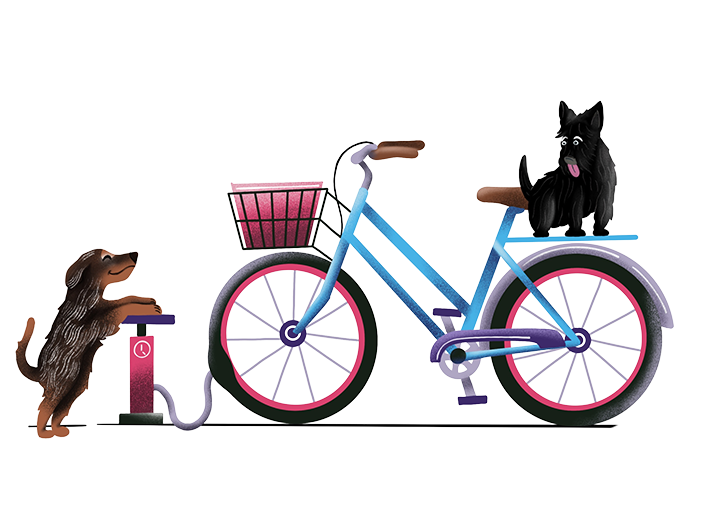Menu

Every business owner has their own personal story. These experiences can shape not only who they are as individuals but also impact the way they can connect and communicate with their customers.
Your personal narrative doesn’t always have to be about your highest moments or successful experiences. It could be a problem that you were faced with or a showcase of how you were able to overcome a challenge and turn it into an exciting opportunity.
If you can determine that important turning point in your life, you can use it and craft it into an effective brand narrative. Most narratives tell the story of why and how your brand came into existence. And as you share your personal journey with your customers, they’re able to relate to and trust you on a deeper level.
Storytelling is a powerful tool for marketing and brand building. However, rather than just stating the facts about your product or service, people are more drawn to the idea behind your business.
Compared to a mere brand story, a personal narrative communicates your business’s identity, personality, core values, and purpose. While a story simply focuses on one message, your narrative can showcase the different life experiences, events, or conflicts that influenced the creation of your brand.
An effective personal narrative answers the questions of why and how rather than what. You can use your narrative to shape how customers see your brand and establish a deeper emotional connection with them. Good narratives also present how well you understand your audience and their pain points, and show what value you can bring to their lives.
Here are some of the ways that a personal narrative can help grow your brand:
Increasing brand awareness is all about capturing attention and stirring emotions from people, and it’s something that personal narratives can do. A strong, well-told narrative helps bring your brand into the spotlight and lets you make a lasting impact among your customers. If people can relate to and identify with your own journey, it’s easier for them to feel a connection with your brand.
At a time when content is king, you can use your personal narrative to give you an advantage over your competitors. Every business has its own story to tell, and the experiences that you share in your narrative are unique only to you. By staying true to your story and the values that make up your brand, you’re more likely to stand out and more people will consider the services and products that you’re offering.
A personal narrative can also be a great tool in forging a strong bond and long-lasting relationship with your customers. This is especially true for the younger market today since they’re said to be more conscious about the brands that they trust.
According to a survey by IBM, younger consumers are looking for quality and authenticity from companies, and about 66% of the respondents are likely to stay with the brand for a long time once they’ve established a strong connection with them. From this, there’s a big opportunity to use your narrative to win over your audience and turn them into long-term advocates.
Mycoskie is the brains behind the popular shoe brand TOMS. In 2006, he took a short trip to Argentina where he met a woman volunteering for a shoe drive. Curious about what spurred the donation drive, he learned that there was a lack of shoe supply in the country and as he traveled the region, he discovered that more children were suffering from being barefoot.
When he returned home, Mycoskie stumbled upon the idea of creating a business where every time he sells a pair, he donates shoes to children in need. From this, he started TOMS with the premise of selling shoes for a better tomorrow.
To many of his customers, TOMS is more than just a shoe brand it’s a business where they can also contribute to the greater good. Since then, his business has been able to help millions of lives and they continue to donate ⅓ of their profits to support the local grassroots.
Modern consumers are smart and they know how to discern a real narrative from a bunch of fluff and fiction. If you’re introducing your brand with a story, you should remember three things: be relatable, convincing, and authentic. They should help set the direction for your personal narrative. Here are other things you need to remember in creating a meaningful narrative:
The most important thing to remember in writing your narrative is that you should be genuine. It’s obvious when you’re offering made-up stories and it can drive away your potential customers. It can help to narrate your real experiences, growth stories, and even failures which can provide a more human aspect to your brand. To help you choose which details to include in the content of your narrative, you can answer these questions:
Establishing your brand tone is also important in helping you convey your narrative. It helps you communicate better with your audience and evoke the emotions that you want your customers to feel. For example, if you’re presenting yourself as a thought leader, you may want to use a professional or inspiring tone in your content.
You may also strengthen your narrative by adding pictures and videos that capture your personal journey. Visual storytelling is a great way to pull your audience into the world of your narrative and let your story stick with them. Additionally, images and videos can showcase more ideas than what you can with words so it’s always a nice tactic to include visuals in your narrative.
When you’re developing a narrative, you should try to be subtle about your products and services and instead focus on the story behind your brand. Consumers are easily put off by hard-sell content and it can do the opposite of establishing a strong connection. You can better engage and capture their attention with emotional and meaningful stories to build their trust first than going straight to selling.
To make your narrative more compelling, you can also showcase your industry expertise by including data and insights in your content. You can use numbers and statistics to tell another side of your narrative and provide more value and credibility to your brand. You can be creative and present your analytics through an infographic so that it’s not too overwhelming for your reader.
Lastly, your narrative becomes more effective when you share an important lesson or realization from your experience. Presenting a personal message in your narrative can help your consumers to better relate and connect to your brand.
In the case of TOMS, Mycoskie wanted to rally the people along with his cause of providing shoes for less privileged children. The consumers were moved by his purpose and this eventually translated to sales as they believed that supporting his business also meant doing their part for society.
Having a personal narrative adds value to your brand and helps build the foundation that will drive your business to success. With Writrly, we’ll provide you with an effective content strategy to help deliver your story to your target audiences. Call us today to know more about our content packages and start sharing your stories.
